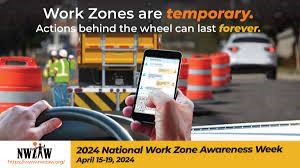Commercial motor vehicle (CMV) drivers are accustomed to facing roadside inspections, a routine aspect of their profession. These inspections gain particular significance during the annual Commercial Vehicle Safety Alliance (CVSA) International Roadcheck, scheduled for May 14-16th this year in North America. While the inspections conducted during Roadcheck scrutinize all safety and compliance aspects of both equipment and drivers, this year, there will be dual focal points. Inspectors will concentrate on the presence or use of controlled substances and alcohol among drivers, alongside a meticulous examination of vehicle maintenance, particularly tractor protection and anti-bleed back systems.
However, inspections are not confined to the Roadcheck event; they occur throughout the year. Here's a breakdown of the eight CVSA inspections every carrier and driver should be familiar with:
-
Comprehensive Driver and Vehicle Inspection: This thorough inspection encompasses both the driver and vehicle, lasting approximately 45-60 minutes. It includes document verification for the driver, such as the commercial driver’s license (CDL) and medical card, and examines various vehicle components like brakes, lights, tires, and cargo securement.
-
Walk-around Inspection: Similar to the comprehensive inspection but excludes components necessitating the inspector to physically inspect beneath the vehicle. It typically takes about 30 minutes to complete.
-
Driver-Only Inspection: Focuses solely on the driver's documentation, including CDL, medical card, hours of service, and annual inspection records.
-
Special Inspections: These are one-time examinations often conducted to investigate a specific item or trend.
-
Vehicle-Only Inspection: Conducted without the presence of the driver, usually at the carrier's premises during an on-site visit. It closely resembles a comprehensive vehicle inspection and serves as a valid annual inspection.
-
Radioactive Materials Inspection: Conducted on select shipments of radioactive materials and adheres to a higher standard than comprehensive inspections. Any brake issues found can lead to an out-of-service violation.
-
Jurisdictional Mandated Commercial Vehicle Inspection: Specific inspections mandated by jurisdictions for certain types of vehicles, such as school buses, limousines, and taxis.
-
North American Standard Electronic Inspection: An electronic inspection conducted wirelessly while the vehicle is in motion, without direct interaction with an enforcement officer. It must fulfill the data exchange criteria outlined in the CVSA North American Standard Level VIII Electronic Inspection definition.
Preparation is crucial. Being aware of inspection requirements and ensuring drivers are equipped to handle inspections professionally and efficiently can enhance your company's performance and reputation within the industry. Adhering to safety protocols minimizes inspections, maintains a favorable safety record, and avoids scrutiny from regulatory bodies like the Federal Motor Carrier Safety Administration (FMCSA).
Commercial Vehicle Safety Alliance (CVSA) Driver Tip Sheet
CVSA published this tip sheet for carriers and drivers in preparation for this year’s Roadcheck that you can print off as a handout for your drivers:
https://www.cvsa.org/wp-content/uploads/NASI-Program-Brochure.pdf
Question of the Week
Question: How long must I retain documentation of my driver's roadside inspection?
Answer: Motor carriers are required to maintain copies of all roadside inspections for a period of 12 months. Drivers must submit the inspection report to the motor carrier within 24 hours, either in person or by mail if they are not returning to the terminal. In cases where violations are found, they must be rectified within 15 days, with the inspection form signed and certified to confirm completion of repairs before being sent back to the state of inspection.
Guidelines for Optimal Roadside Inspection Practices:
- Provide comprehensive training to drivers on conducting thorough pre-trip inspections to minimize the risk of violations.
- Regularly review the Compliance, Safety, Accountability (CSA) scores monthly on www.ai.fmcsa.dot.gov by entering your DOT number or name.
- Cross-reference the inspections conducted by your drivers with those on file, and address any discrepancies promptly. Investigate drivers who fail to submit inspection reports.
- Utilize the "Carrier History" tab in the Tools/Resource section of your homepage to monitor the frequency of inspections, identifying any trends of increase or decrease.
- Collaborate with your maintenance provider to review vehicle inspections and violations, aiming to mitigate future infractions.
- Maintain copies of inspection reports in the tractor and trailer files, including any associated repair orders in the case of violations.
- Analyze roadside inspection data, including dates, times, and locations, to verify compliance with drivers' hours of service documentation and identify any potential falsifications.
- Provide training to drivers on effective strategies to successfully navigate roadside inspections and conduct themselves professionally during inspections.
- Ensure vehicles are kept clean and well-maintained to avoid attracting unnecessary inspection attention.
- Inform drivers that moving violations can trigger roadside inspections.
- Consider implementing incentives for drivers who pass inspections successfully, fostering a culture of compliance and safety awareness.
National Work Zone Awareness Week: April 15-19th
During April 15-19th, we observe National Work Zone Awareness Week, a critical time for our drivers as they encounter work zones. Each year, around 600 individuals tragically lose their lives in roadway work zones, with approximately 90 workers succumbing to fatal accidents, often involving vehicles intruding into marked construction areas. Prioritizing the elimination of distractions while approaching and navigating through work zones is essential.
National Work Zone Awareness Week (NWZAW) is a springtime campaign dedicated to promoting safe driving practices in highway work zones and construction sites. NWZAW emphasizes the importance of exercising heightened caution in these areas, serving as an annual reminder for drivers to remain vigilant. For further information, please visit the following resources:










